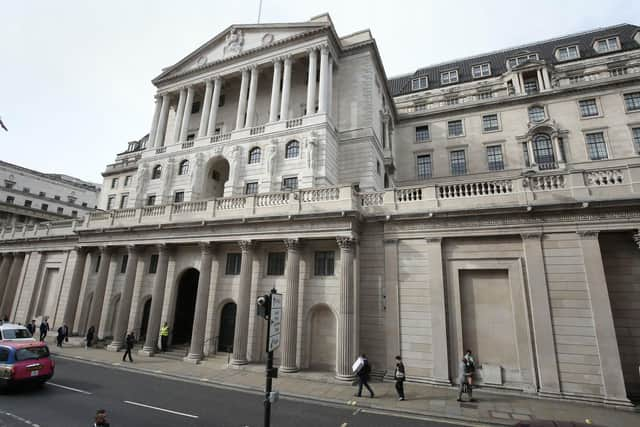Fertiliser costs remain an issue with no signs of easing
and live on Freeview channel 276
That was clear this week when, as the UK economy lurches into a potentially deep recession, the Bank of England was forced to again increase interest rates.
This is the ninth consecutive rise and the aim is, ironically, to damp down consumer spending. This is the classic way for a central bank to control inflation – but what we are experiencing is not normal inflation.
Advertisement
Advertisement
Prices are being driven up by higher costs for food and fuel in particular. Inflation is not being driven by an excess of demand from consumers.


There has to be a sense that raising interest rates in a recession will make a bad situation worse. However rates are the only lever the bank has in its armoury and time will tell whether it can cool our out of control inflation.
It said a lot when this week a drop in the rate from above 11 per cent to 10.7 per cent was seen as progress, built on seasonally lower petrol and diesel prices.
However whether the rate is over or under 11 per cent it is still at a damaging 40 year high, with no certainty that the Bank of England’s modest rate increase will solve the problem.
Advertisement
Advertisement
The factors driving inflation on farms have not changed. Fertiliser costs remain an issue, with no signs of an early easing of cost or supply problems; labour is costly and hard to get, thanks to the government's block on free movement of labour as part of its Brexit approach; farms are also being hurt by the same cost pressures as every other business and it is getting harder to pass unpopular higher costs up the supply chain.
Food price inflation is here to stay. It will ease as overall inflation eases, but after years of being too low, food prices will hopefully now move onto a more realistic plateau. This is an unpopular view with consumers, but farmers cannot go back to producing food far below the cost of production.
In the EU sights are set on farming and food markets in 2032. This is the content of the European Commission's annual Agricultural Outlook report.
This time they are painting a picture of a greener, potentially less productive, agricultural industry. This again underlines how the UK could use Brexit to go in a different, more global, direction but that is falling on deaf ears at Westminster.
Advertisement
Advertisement
Farmers here are in line for are the same policies, but without the EU's funding and solidarity. That is, by any standards, another betrayal of Brexit promises.
The report acknowledges that 2022 has been a year of rising costs and extreme weather events.
However it insists EU farming is resilient and capable of delivering the food consumers need in Europe, with a cereal surplus for export.
It says the new CAP has delivered member states the tools to protect the family farm based European agricultural model.
Advertisement
Advertisement
The area of cereals in the EU will fall marginally, with the EU remaining a net exporter of wheat and barley. It will become less reliant on imports of protein and oilseeds as European production grows. This may be more hope that expectation, but it fits with green thinking in Brussels.
Comments on cereal demand confirm the pressure the livestock industry faces from a shift towards green thinking.
Cereal demand will remain the same, but the balance between food and feed will change to reflect less demand from the livestock sector.The ten years ahead for the livestock sector looks far from promising. A new environmentally driven approach will impact the dairy sector.
The report forecasts a move towards less intensive production methods, with a decline in dairy herds and milk production. It says the dairy market in Europe is ‘mature’ with growth limited to cheese, while on the export front the EU will find it more difficult to compete in milk powder markets. On beef the message is even less palatable.
Advertisement
Advertisement
The forecast is for demand to be driven by sustainability concerns, with a greater focus on organic and extensive systems. This will see a big drop in demand for red meat, while pigmeat will lose out to price competition from poultry – the only meat sector with a positive growth forecast.
Brexit is an opportunity for the UK to be more global and less green, but the odds on that are as distant as an early resolution of inflation.